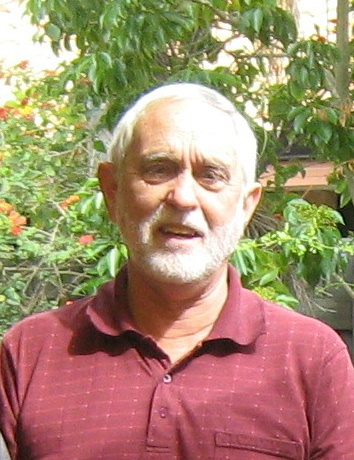The ASEG SA/NT branch will meet on Thursday 20th June at 5:30 pm for a 6:15 pm start.
We have Emeritus Professor David Groves speaking on, 'A Holistic Subduction/ Metasomatized Lithosphere Model for Orogenic Gold Deposits. '
David was recognised as a National Geoscience Champion by the Australian Geoscience Council in 2018, and we are honoured to have him present to us.
https://www.agc.org.au/geoscience-in-australia/national-geoscience-champ...
Details:
Date and time: Thursday 20th June, 5:30 pm for 6:15 pm start
Cost: Free for ASEG members and students, $10 for non-members
Venue: Balcony Room, Hotel Richmond, 128 Rundle Mall, Adelaide, 5000
RSVP: Via Eventbrite (RSVP only, payment for non members to be paid in cash at the door)
https://www.eventbrite.com.au/e/national-geoscience-champion-emeritus-pr...
Hope to see you there!
Abstract
A holistic model for the origin of orogenic gold deposits and its implications for exploration
The term orogenic gold deposit has been widely accepted for the majority of gold-only lode-gold deposits, but there has been continuing debate on their genesis. Early syn-sedimentary or syn-volcanic models and hydrothermal meteoric-fluid models are now invalid. Magmatic-hydrothermal models, except for rare examples of intrusion-related gold deposits, fail because of the lack of consistent spatially –associated granitic intrusions and inconsistent temporal relationships. The most plausible, and widely-accepted models involve metamorphic fluids, but the source of these fluids continues to be hotly debated. Intra-basin sources within deeper segments of the hosting supracrustal successions, the underlying continental crust, subducted oceanic lithosphere with its overlying sediment wedge, and metasomatized lithosphere are all potential sources. Several features of Precambrian orogenic gold deposits are inconsistent with derivation from a continental metamorphic fluid source. These include the presence of hypozonal deposits in amphibolite-facies domains, the proposed source region of the metamorphic fluids, their anomalous multiple sulfur isotopic compositions, and problems of derivation of gold-related elements from devolatilization of dominant basalts in the sequences. The Phanerozoic deposits are largely described as hosted in greenschist facies domains, consistent with supracrustal devolatilization models. A notable exception are the deposits of the giant Jiaodong gold province of China, where ca 120 Ma gold deposits are hosted in Precambrian crust that was metamorphosed over 2000 million years prior to gold mineralization. Other deposits in China are comparable to those in the Massif Central of France, in that they are hosted in amphibolite-facies domains or clearly post-date regional metamorphic events imposed on hosting supracrustal sequences. If all orogenic gold deposits have a common genesis, the only realistic source of fluid and gold is from devolatilizion of a subducted oceanic slab with its overlying gold-bearing sulfide-rich sedimentary package, or the associated metasomatized mantle wedge, with CO2 released during decarbonation and S and ore-related elements released from transformation of pyrite to pyrrhotite at about 500°C. Although this model satisfies all geological, geochronological, isotopic and geochemical constraints, and is consistent with limited computer-based modelling of fluid release from subduction zones the precise mechanisms of fluid flux, like many other subduction-related processes, are model-driven and remain uncertain.
In terms of exploration significance, the model confirms the ubiquitous distribution in paleo-subduction environments of all geological ages. It stresses the importance of lithosphere-tapping fault and shear zone systems that can tap fluids from the Moho and below. It also de-emphasizes reliance on exploration in greenschist-facies terranes, opening up opportunities in less-explored amphibolite-facies terranes. In fact, some of the more recent orogenic gold discoveries were made in amphibolite terranes in Western Australia (e.g. Tropicana) and Quebec, Canada (e.g. Eleonore).
Bio

David Groves was born in Brighton, England, and migrated to Tasmania where he was educated at Hobart High School and at the University of Tasmania, completing a PhD under the mentorship of Mike Solomon. After a period with the Geological Survey of Tasmania, David was appointed Lecturer in Economic Geology at the University of Western Australia (UWA) in 1972. In 1987, he was awarded a Personal Chair at UWA and formed the Centre for Strategic Mineral Deposits, which morphed into the Centre for Global Metallogeny, with him as Director, and which became the Centre for Exploration Targeting after his retirement as Emeritus Professor. He had a very successful academic career in terms of highly-cited published papers and book chapters, keynote and invited lectures, and mentorship of many outstanding postgraduates, being awarded 12 medals and prizes, including the SEG Silver and Penrose Gold Medals and the SGA-Newmont Gold Medal, and being inducted into the Australian Academy of Sciences as a Fellow. Since his retirement from UWA, David has continued to write papers and mentor staff and students at the China University of Geosciences in Beijing (CUGB), as well as consult to industry, being involved in discovery of two > 1Moz gold deposits during greenfield exploration in Tanzania and Ethiopia.
In 2018, he was made a National Geoscience Champion by the Australian Geoscience Council and recognized as one of the 125 Faces of Geoscience by the Australasian Institute of Mining and Metallurgy. In recent years, David has also published three novels, with “The Plagues’ Protocol” having a “geological detective” as the main left-field thinking character. He has also commenced writing novels for a Chinese audience, the first in press being “Destiny on Magic White Mountain”, again with a strong mineral exploration background. He hopes to help popularize geology through his novels as part of his role as National Geoscience Champion.
